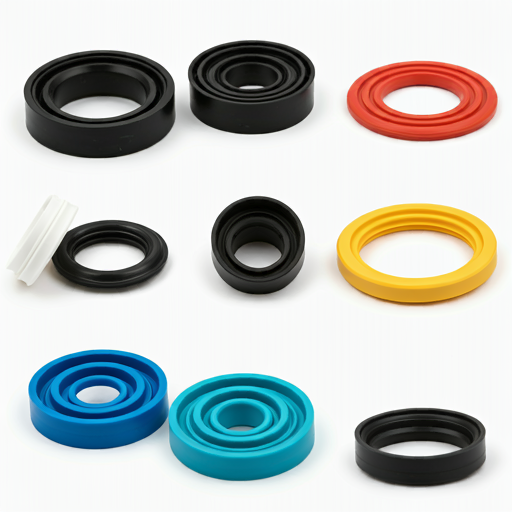Silicone is known for its versatility, durability, and high performance, but its cost can be prohibitive for certain applications. This has led many to explore alternative materials that offer similar benefits at a lower price point. So, what is the best alternative to silicone? Let's dive deep into this topic and explore the reasons behind silicone's high cost, cheaper alternatives, and their applications.

This article will explore why silicone has become expensive, what cheaper materials can replace silicone, and which industries are benefiting from these alternatives.
Why Is Silicone So Expensive Now?
Silicone's high cost can be attributed to several factors, including the raw materials used, manufacturing processes, and its specific properties that make it a premium choice for many industries.
Factors Contributing to the High Cost of Silicone
| Factor | Description |
|---|---|
| Raw Materials | Silicone is derived from silica, which is refined into a polymer, a costly and energy-intensive process. |
| Manufacturing Process | The production of silicone involves high-temperature processes and specialized equipment, which increase production costs. |
| Performance Properties | Silicone offers high-temperature resistance, flexibility, and durability, making it ideal for demanding applications. These performance properties justify its premium price. |
| Limited Raw Material Sources | Silica used in silicone production is not as abundant or easy to extract, leading to supply chain issues and higher costs. |
Silicone's exceptional properties—such as high heat resistance, flexibility, and biocompatibility—make it irreplaceable in many applications. However, its production process is expensive, and the raw material supply is often constrained, which contributes to its high cost.
What Is a Cheap Alternative to Silicone Rubber?
Several materials can serve as viable, lower-cost alternatives to silicone, depending on the application. Let's explore the best options.
1. EPDM Rubber (Ethylene Propylene Diene Monomer)1
EPDM is a synthetic rubber material that offers good resistance to heat, ozone, and weathering. It's an excellent choice for applications that don't require the extreme flexibility or temperature resistance of silicone but still need durability.
Advantages of EPDM:
- Lower cost compared to silicone.
- Good weather and UV resistance.
- Excellent for automotive, HVAC, and outdoor applications.
Applications of EPDM:
- Automotive gaskets and seals.
- Roofing membranes.
- HVAC components.
2. Nitrile Rubber (NBR)2
Nitrile rubber is a synthetic rubber made from acrylonitrile and butadiene. It's known for its excellent resistance to oils, fuels, and other chemicals. Nitrile is cheaper than silicone and offers decent flexibility and durability.
Advantages of Nitrile:
- Superior resistance to oils and fuels.
- Lower price point than silicone.
- Good for industrial applications.
Applications of Nitrile:
- Fuel and oil-resistant seals.
- Gaskets and O-rings for automotive industries.
- Industrial sealing applications.
3. Neoprene Rubber3
Neoprene, also known as polychloroprene, is a synthetic rubber4 that has good resistance to weathering, ozone, and a wide range of chemicals. It's often used as an alternative to silicone for applications where flexibility and resistance to environmental factors are important.
Advantages of Neoprene:
- Excellent resistance to oil, chemicals, and aging.
- More cost-effective than silicone.
- Can be used in a variety of environmental conditions.
Applications of Neoprene:
- Seals and gaskets.
- Wetsuits and protective gear5.
- Electrical insulation.
Comparison of Silicone Alternatives
| Material | Cost Comparison | Key Benefits | Applications |
|---|---|---|---|
| Silicone | High | High-temperature resistance, flexibility | Medical devices, food-safe products |
| EPDM | Moderate to Low | Weather resistance, UV resistance | Automotive, HVAC, outdoor applications |
| Nitrile Rubber | Moderate | Oil, fuel, and chemical resistance6 | Automotive, industrial sealing |
| Neoprene | Moderate | Chemical and aging resistance | Protective gear, seals, electrical insulation |
Conclusion
When looking for an alternative to silicone, the choice depends heavily on the specific requirements of the application. While EPDM, Nitrile, and Neoprene are all viable alternatives, each material comes with its own set of advantages and limitations. EPDM is great for outdoor and automotive applications, while Nitrile excels in oil and fuel resistance. Neoprene is versatile for both industrial and protective uses.
Discover the advantages of EPDM rubber, a cost-effective alternative to silicone, ideal for various applications. ↩
Explore how Nitrile rubber can be a cheaper and effective solution for industrial applications, especially in oil resistance. ↩
Learn about Neoprene rubber's versatility and its applications in protective gear, making it a great alternative to silicone. ↩
Explore the advantages of synthetic rubber to understand its applications and benefits in various industries. ↩
Discover the different types of protective gear made from neoprene and their benefits for safety and performance. ↩
Learn about chemical resistance in materials to see how it impacts product longevity and safety in various applications. ↩







